Originally I wanted to continue the series about the Messel-fossils, but I am still working on a reconstruction illustration for the next part and needed a break. Instead I´ll jump on the Dilophosaurus bandwagon, because this awesome theropod from the Early Jurassic is just big in the news, and it´s a good excuse to finally post some photos about a quite unconventional yet very cool Dilophosaurus reconstruction from the Geological Museum in Warsaw. I don´t even want to go here into the details of the new publication but mainly show you some photos which I took several years ago in Warsaw:

As you can see, nearly the complete body of this reconstruction is covered in filament-like feathers, quite in contrast to the common depiction of Dilophosaurus with nothing but naked scaly skin. This is btw not the first time I wrote about this species. Years ago I already discussed why the popular idea that it was just a scavenger was not really likely.
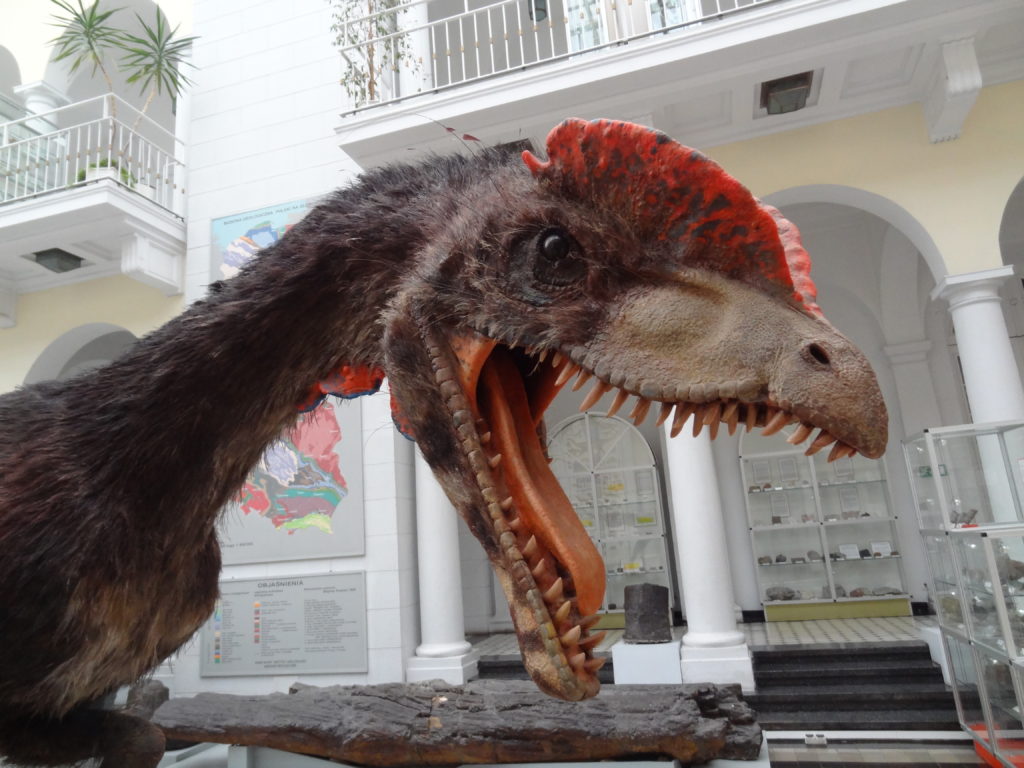
Here´s a detail of the head. It´s not that easy to see from this direction, but the artists even added some fin bristle like feathers to the head.
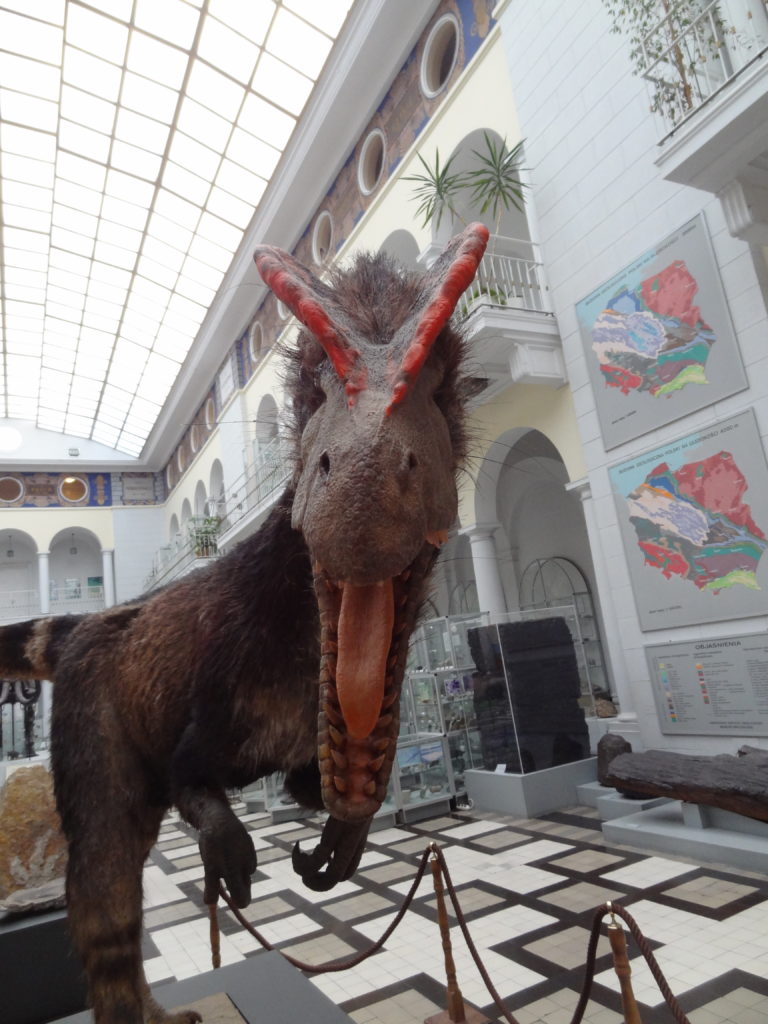
It comes already quite close to the new (and pretty awesome-looking) reconstruction by Brian Engh. Of course this version does inclued a pretty large amount of artistic freedom regarding the soft tissue reconstruction, but it looks really very interesting. Brian´s Dilophosaurus puppet is also a wonderful example how life-like well-made models can look and how superior they still are compared with most CGI attempts. Take a look at this video by Brian, which includes also some information about the news from the paper.
The appearance of the Warsaw Dilophosaurus is even more surprising given the fact that the model was created in 1997 by Marta Szubert. At that time theropods were still nearly universally portrayed without any feathers or filaments and hardly anyone considered to depict a big theropod with anything else than scaly skin.
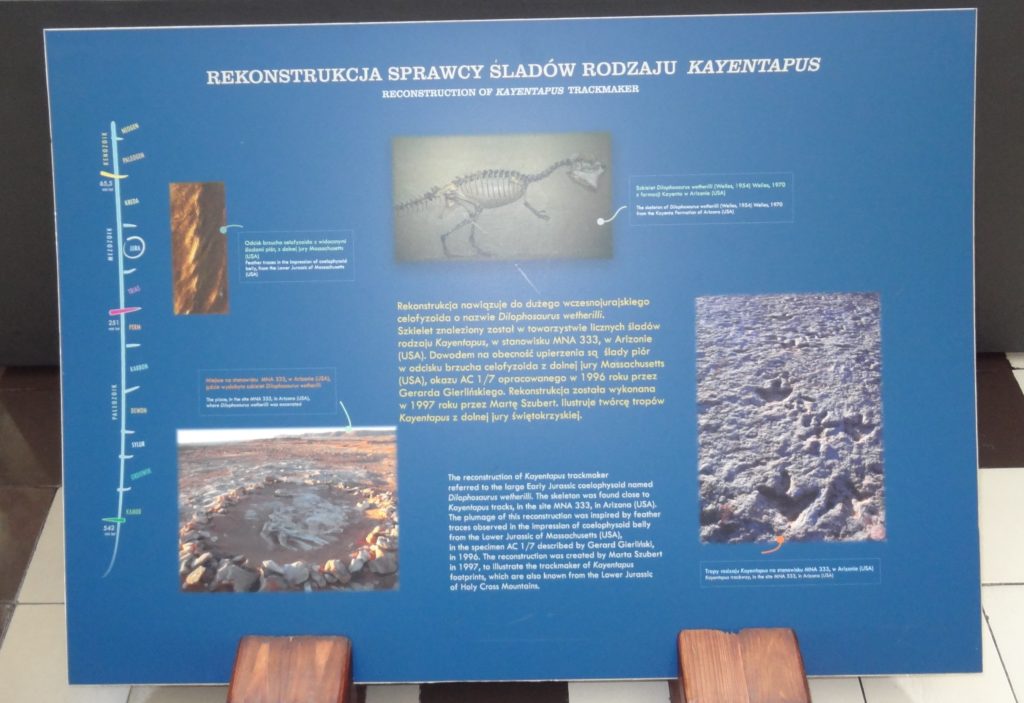
The featherless parts of the arms and legs of the model from Warsaw were also quite nicely sculpted, especially the scale patterns of the feet looked highly realistical (more about the scale patterns on the legs of ostrichs and emus).
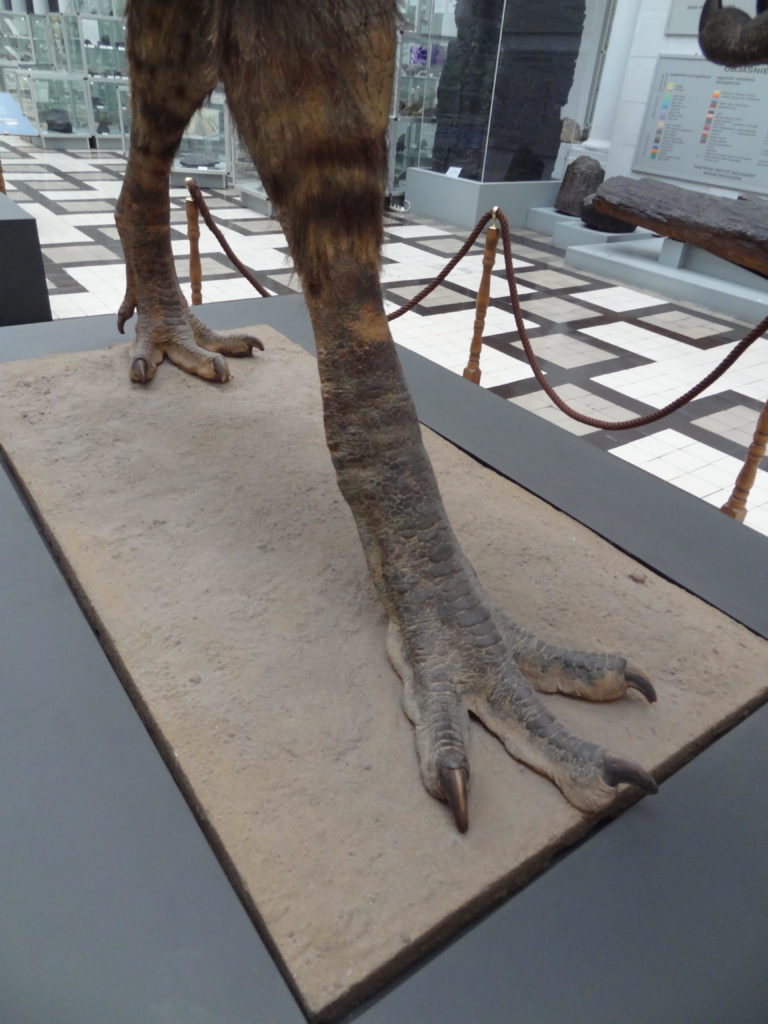
There was a huge amount of information which was used to create this reconstruction, for example various body impressions.
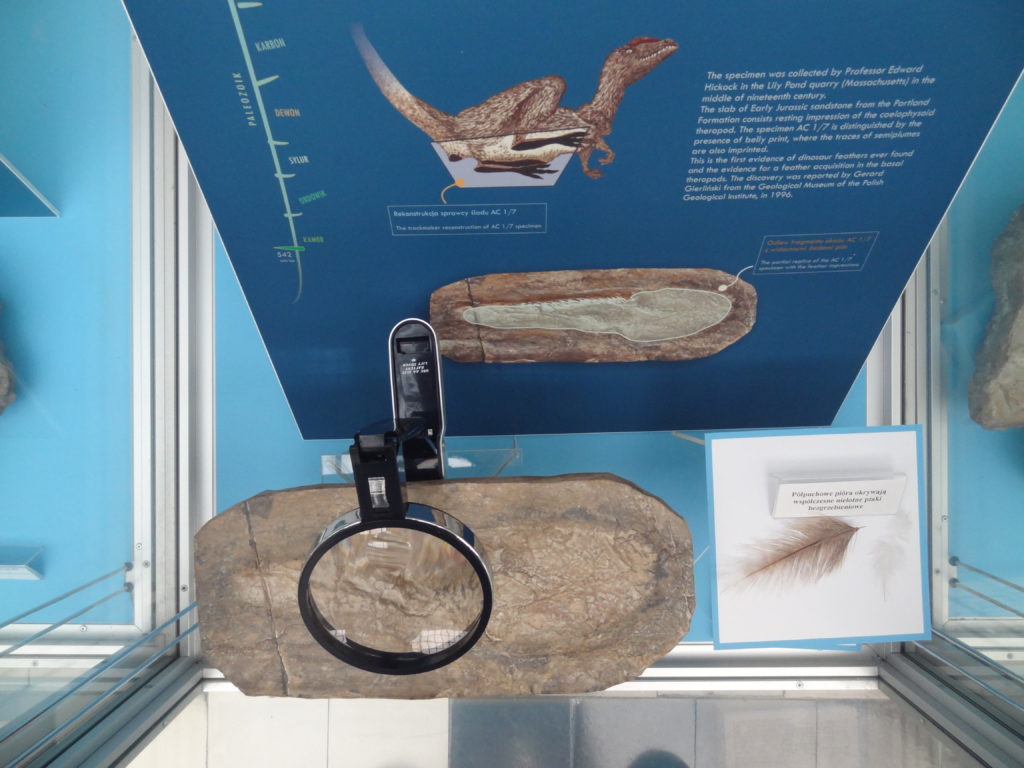
Here is another photo in full lateral view. I really love how the tail was covered in alternating black and white feathers.
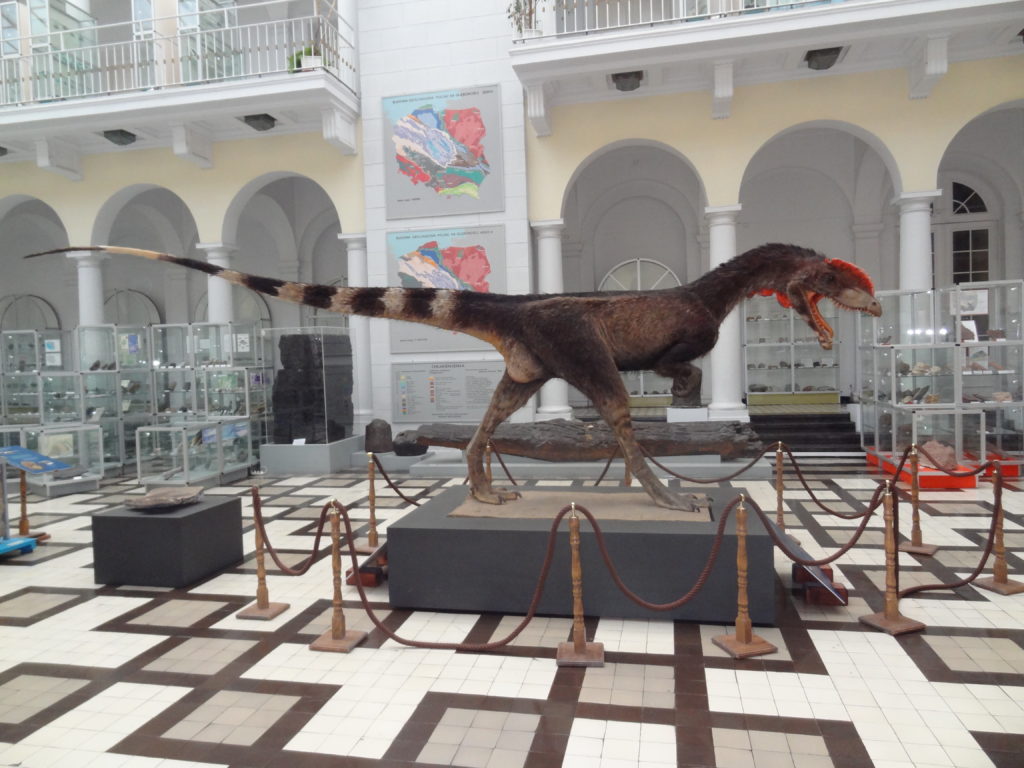
In 2013 Darren Naish already wrote another blog article with some additional background information about the history of this particular reconstruction. I highly recommand to read it.
If you ever visit Warsaw, you should really take some time and visit the Geological Museum. Its paleontological section is not quite big, as it mainyl focuses on geology and mineralogy, but it´s still really worth to visit. If you want to see more fossils, including the likely best exhibition about Tarboaurus, you have to visit the Museum of Evolution, which is located in the monumental Palace of Culture.

Seems the „hands“ are anatomical wrong.
That´s true, but keep in mind that this reconstruction was made in 1997 when this was still the common way to depict theropod hands.
I agree with Markus, it was made 23 years ago, this is just my opinion on this subject but so far it is the best reconstruction of Dilophosaurus in the world